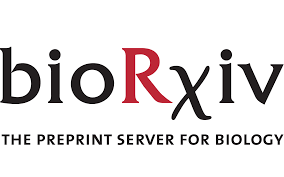Abstract:
Background: Root crown phenotyping has linked root properties to shoot mass, nutrient uptake, and yield in the field, which increases the understanding of soil resource acquisition and presents opportunities for breeding. The original methods using manual measurements have been largely supplanted by image-based approaches. However, most image-based systems have been limited to one or two perspectives and rely on segmentation from grayscale images. An efficient high-throughput root crown phenotyping system is introduced that takes images from five perspectives simultaneously, constituting the Multi-Perspective Imaging Platform (M-PIP). A segmentation procedure using the Expectation-Maximization Gaussian Mixture Model (EM-GMM) algorithm was developed to distinguish plant root pixels from background pixels in color images and using hardware acceleration (CPU and GPU). Phenes were extracted using MatLab scripts. Placement of excavated root crowns for image acquisition was standardized and is ergonomic. The M-PIP was tested on 24 soybean [Glycine max (L.) Merr.] cultivars released between 1930 and 2005 . Results: Relative to previous reports of imaging throughput, this system provides greater throughput with sustained rates of 1.66 root crowns min-1. The EM-GMM segmentation algorithm with hardware acceleration was able to segment images in 10 s, faster than previous methods, and the output images were consistently better connected with less loss of fine detail. Image-based phenes had similar heritabilities as manual measures with the greatest effect sizes observed for Maximum Radius and Fine Radius Frequency. Correlations were also noted, especially among the manual Complexity score and phenes such as number of roots and Total Root Length. Averaging phenes across perspectives generally increased heritability, and no single perspective consistently performed better than others. Angle-based phenes, Fineness Index, Maximum Width, Holes, Solidity and Width-to-Depth Ratio were the most sensitive to perspective with decreased correlations among perspectives. Conclusion: The substantial heritabilities measured for many phenes suggest that they are potentially useful for breeding. Multiple perspectives together often produced the greatest heritabilities, and no single perspective consistently performed better than others. Thus, as illustrated here for soybean, multiple perspectives may be beneficial for root crown phenotyping systems. This system can contribute to breeding efforts that incorporate under-utilized root phenotypes to increase food security and sustainability.
Links:
Citation:
A. Seethepalli, L. York, H. Almtarfi, F. Fritschi and A. Zare, “A novel multi-perspective imaging platform (M-PIP) for phenotyping soybean root crowns in the field increases throughput and separation ability of genotype root properties,” in bioRxiv, 309161.@Article{Seethepalli2019Novel,
Title = {A novel multi-perspective imaging platform (M-PIP) for phenotyping soybean root crowns in the field increases throughput and separation ability of genotype root properties},
Author = {Seethepalli, Anand and York, Larry M. and Almtarfi, Hussien and Fritschi, Felix B. and Zare, Alina}
Year = {},
Journal = {bioRxiv},
Publisher = {Cold Spring Harbor Laboratory},
doi = {10.1101/309161}
}
